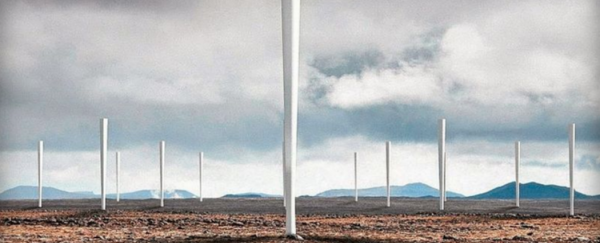A Spanish company called Vortex Bladeless has come up with bladeless wind turbine technology that seeks to provide more energy for less, and address the criticisms aimed at traditional wind farms - particularly where wildlife is concerned.
With blades that spin at speeds of more than 320 km/h (200 miles/hour), wind turbines haven't been the best news for the birds that live around them. While for the most part, the damage is fairly minimal, one wind farm in particular, Altamont Pass in California, US, has drawn the ire of local residents because of the 1,300 birds of prey - including eagles, falcons, hawks - that are killed each year as they try to migrate through it.
And keeping all those heavy blades spinning that fast indefinitely? Well, it's no easy task, and certainly not cheap, energy-wise. According to Vortex Bladeless, just by ditching the blades - and all moving parts, in fact - they will save around 40 percent of the energy cost of regular wind turbines, largely by cutting down on maintenance costs. "Since the Vortex doesn't have moving parts or gears, it should last longer and it won't require periodic lubrication," Dante D'Orazio from The Verge reports. "The simpler design also means that manufacturing costs are about half that of a traditional wind turbine."
D'Orazio adds that the bladeless turbines are estimated to harvest approximately 30 percent less energy, but because they're basically just sticks now, you can cram a whole lot more of them into the space of a regular wind turbine. Plus these things are completely silent, so no one can claim instances of wind turbine syndrome, where the sub-sonic noise generated by traditional wind turbines is blamed for everything from headaches and dizziness to sleepiness and depression.
So how do they work, exactly? Just like traditional wind turbines, the bladeless variety still needs to capture kinetic energy and convert it to electricity, but instead of using a blade, it uses a phenomenon known as vorticity, which produces a series of spinning vortices in the surrounding air. The team at Vortex Bladeless designed their 2.7-metre-high 'cones' specifically so that these vortices would accumulate simultaneously all the way up their length. Liz Stinson explains at Wired:
"In its current prototype, the elongated cone is made from a composite of fibreglass and carbon fibre, which allows the mast to vibrate as much as possible (an increase in mass reduces natural frequency). At the base of the cone are two rings of repelling magnets, which act as a sort of nonelectrical motor. When the cone oscillates one way, the repelling magnets pull it in the other direction, like a slight nudge to boost the mast's movement regardless of wind speed."
The kinetic energy that's generated from all this movement is then converted into useable electricity using an electrical generator called an alternator.
Vortex Bladeless have already raised over $1 million in funding, and hope to gather more from investors in the US. They're planning on installing their first prototype by the end of the year.
H/T Wired
